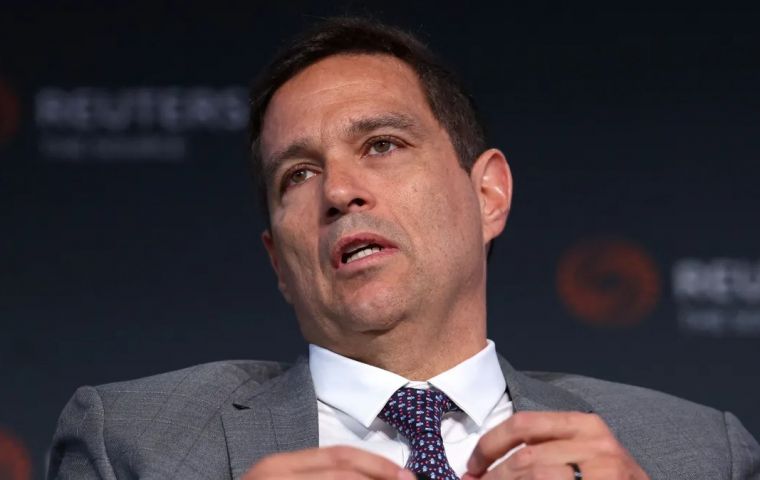MercoPress. South Atlantic News Agency
Brazil: inflation down in June, but also economic growth; Lula waiting to remove Central Bank chair in December
 The mandate of central bank governor Roberto Campos Neto, who was appointed by Jair Bolsonaro, President Lula da Silva’s predecessor, ends in December
The mandate of central bank governor Roberto Campos Neto, who was appointed by Jair Bolsonaro, President Lula da Silva’s predecessor, ends in December Inflation in Brazil measured by the IPCA was 0,21% in June, which is positive. Still, the twelve month figure was 4,23% against 3,93% in May according to the Brazilian Institute of Geography and Stats, IBGE.
Likewise growth prospects also declined with the Brazilian economy growing by 0.25% in May, according to data from the Central Bank Economic Activity Index (IBC-Br) released this Monday (15th). The IBC-Br is a key indicator of the country’s Gross Domestic Product (GDP).
“The inflation rate in June was below the expected rate, which was an acceleration of 0.32% and this removes the possibility of the central bank having to increase interest rates in the short term. However, the scenario for this year still does not leave room for the resumption of a monetary easing cycle,” Luciano Rostagno, chief strategist at EPS Investimentos commented.
Rostagno expects the Selic policy rate will remain at the current 10.5% at least until the end of this year. In June, the monetary authority kept the Selic unchanged amid inflation concerns and ended a monetary easing cycle that began last August when the rate was 13.75%.
At the time, analysts and investors saw the possibility of an increase in the base rate this year in the face of worsening government finances due to the continued increase in spending. However, recently the government acted to control such expectations, announcing measures to cut budget expenses starting next year.
“After quite turbulent moments, we are in a period of lower pressure both due to the announcement of government spending cuts and also now due to the lower inflation indicator, but there is still no room for a reduction in the Selic rate because now the central bank's monetary policy is looking at next year's inflation,” said Rostagno.
The four-year mandate of central bank governor Roberto Campos Neto, who was appointed by Jair Bolsonaro, President Lula da Silva’s predecessor, ends in December. The Brazilian leader is committed to replace him by the current central bank's policy director, Gabriel Galipolo, more in line with the current government's intended monetary and credit expansion to promote consumption and greater economic activity.
Brazil's consumer prices rose less than expected in the month to mid-June despite pressure from food inflation, data from statistics agency IBGE showed.
Brazil's central bank unanimously paused its easing cycle last week by holding its benchmark interest rate at 10.50% amid higher inflation expectations, fiscal struggles and the outlook for future rate cuts by the U.S. Federal Reserve.
The reading “won't change the picture that the central bank's easing cycle is over – for this year at least,” William Jackson, Chief Emerging Markets Economist at Capital Economics, said in a note to clients.
“With the headline inflation rate likely to rise further in the coming months, the real still under pressure and no end in sight to the government's fiscal saga, we don't see scope for any more interest rate cuts over the rest of this year.”
Brazil's annual inflation hit 4.06% in the first half of June, according to IBGE, compared with an expected 4.12%.Private economists polled weekly by the central bank see stable interest rates through 2024 and falling to 9.5% by the end of 2025.




Top Comments
Disclaimer & comment rulesCommenting for this story is now closed.
If you have a Facebook account, become a fan and comment on our Facebook Page!